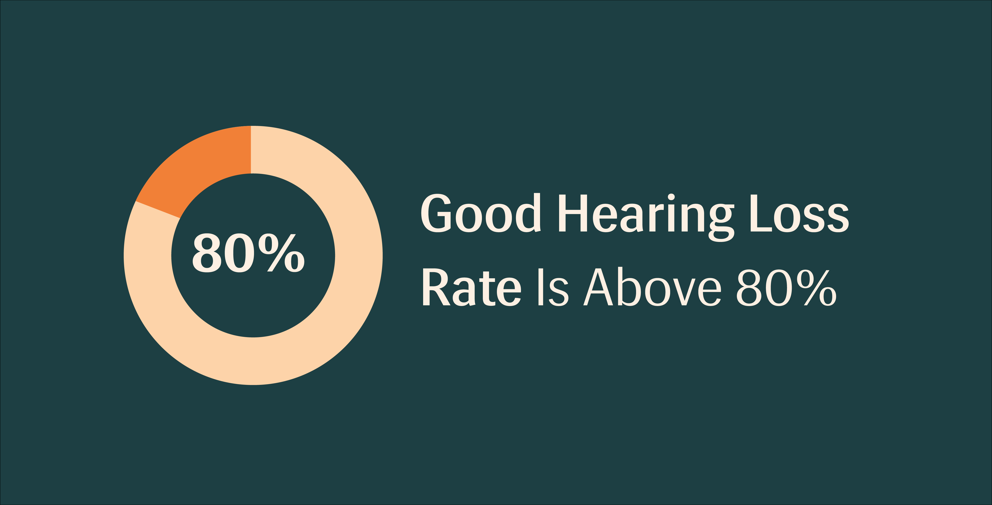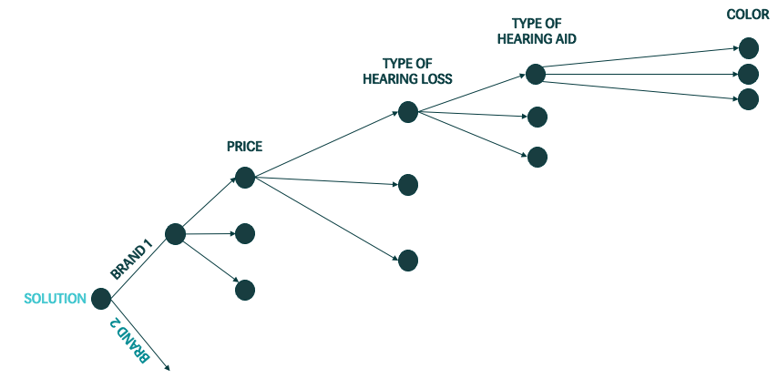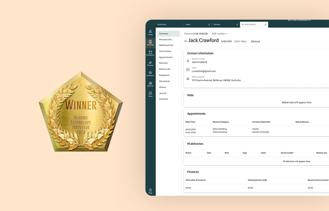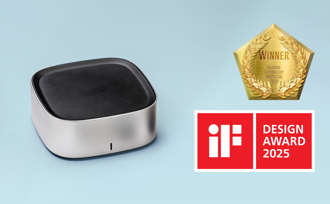
In hearing care, there's no single, standard definition of what a “conversion rate” looks like, because patient journeys can vary. That’s why it’s helpful to break things down into key steps along the way. By understanding and optimizing each stage, from first contact to long-term care, you can increase your clinic’s success and improve patient outcomes.
Each step contributes to the bigger picture. Your team plays a vital role at every stage, whether it’s encouraging bookings, supporting patients during consultations, or helping them follow through with treatment. Small improvements at each stage can lead to major gains overall.
Key Conversion Stages:
- From Booking to Show-Up (Show-up Rate)
- From Show-Up to Hearing Loss Detected (Lead Quality)
- From Hearing Loss Diagnosis to Trial (Help Rate)
- From Trial to Purchase (Treatment Follow-Through)
Below, please find some tips and tricks on how to best optimize each aspect to benefit the overall conversion rate.
1. From Booking To Show-Up | The Show-Up Rate
A double-digit percent of clients with an appointment do not show up for their appointment, which wastes your valuable resources. There are multiple reasons why a client does not show-up at an appointment.

Common reasons for no-shows — and how to prevent them:
Patients Simply Forget
- Send automated SMS or email reminders the day before
- Include the time, location, and contact info in every reminder
- Avoid scheduling appointments too far in advance when possible
They Can’t Find Your Location
- Share the clinic address, directions, and parking info ahead of time
- During the reminder, ask if they know how to get there
- Make sure your clinic is listed and correctly pinned on Google Maps
They Run into Issues but Don’t Cancel
- Make your contact info visible on every page of your website
- In your reminder message, ask for a confirmation and make it easy to reschedule
- Consider offering a “quick reschedule” link in your reminders to reduce friction
2. From Show-Up To Hearing Loss I Lead Quality - Velocity Rate
When you get a new patient, an appointment with an audiologist is often 1-1.5 hours long. This time should be spent discussing the patient's hearing loss, examining their ears, and recommending the best solutions to meet their specific needs and budget.
Audiologists are often measured on their ability to convert these leads into sales. But what if there is no hearing loss? Then it is not the audiologist’s fault that they cannot convert the lead, and they should not be measured on this KPI. It is, therefore, very important that the lead is pre-qualified before they book a longer appointment with an audiologist and that the audiologist is measured on the conversion rate of patients with hearing loss detected.

A call center or a front desk staff often sets up the appointments. They are also responsible for qualifying the lead prior to the booking. Areas to focus on include:
Set the Right KPIs
Measure your call center, front desk staff, or companies providing leads to your clinics - not only on the number of bookings but also on the show-up rate and the percentage of hearing loss detected. In that way, they are rewarded for quality vs. quantity, allowing your clinic staff to spend their time on the right clients.
Qualify Bookings
When booking an appointment, have a set of standard questions to ask about why the client believes they are experiencing hearing loss. Like “what makes you think you might have a hearing loss,” “in which situations do you find it difficult to hear?” If the client’s answers indicate hearing loss is likely, add them in your Practice Management Software and book an appointment.
Qualify the Patients by Age
If a patient is more than 65 years old, they are statistically more likely to have a hearing loss. The receptionist or call center should book the first appointment (90 min.) for qualified older clients. If the patient is younger than 65, carefully qualify them and potentially set a shorter initial appointment (30 min.) to examine the patient’s ears and decide if it is necessary to book an additional, longer appointment.
Pre-Screening of Hearing
Set up a hearing pre-screening tablet device in your reception to pre-screen patients prior to the appointment. This is especially critical for younger patients to confirm their hearing loss. This will save the audiologist’s time and allow the audiologist to use these test results to help guide the deeper hearing evaluation.
3. From Hearing Loss Detected To Trial I Help Rate
This conversion rate is focused on how your audiologists can convince the client to try the hearing aids for a couple of months and see firsthand how it can help improve their quality of life. In the US, it is often referred to as the “help rate.”

Assess Each Patient
Understand each patient’s specific challenges by asking open-ended (not “yes-no”) questions to determine how their hearing loss has impacted their lifestyle. Do not go on autopilot. When you sit with a patient, make sure to talk directly to their needs, lifestyle, and challenges. This is important for both your new and existing patients wishing to repurchase.
Ask Patients to Bring Their Loved Ones
It has been reported that the conversion-rate can improve as much as 40% if a loved one is involved in the appointment. They will confirm the hearing challenges and help the client make the decision to buy hearing aids and other equipment. Ask the client to bring their spouse or other loved one to their first appointment to get a more comprehensive picture of the patient's hearing difficulties and needs.
Don't Overwhelm the Patient
When you recommend hearing solutions for the patient, do not overwhelm them with options. Make a simple suggestion with two options that you’d recommend to solve their problems. Be sure to refer back to the challenges they have expressed and explain how the recommended hearing solutions can solve those problems and bring them value. If an accessory, such as a TV streamer, can further help them, only mention one accessory. Otherwise, it will be too much information for the client to grasp at once.
An example: We always assume that the more choices we offer, the more likely customers will be able to find just the right thing. In 2000, psychologists Sheena Iyengar and Mark Lepper published a remarkable study. On one day, shoppers at an upscale food market saw a display table with 24 varieties of gourmet jam. Those who sampled the spreads received a coupon for $1 off any jam. On another day, shoppers saw a similar table, except only six varieties of the jam were on display. The large display attracted more interest than the small one. But when the time came to purchase, people who saw the large display were one-tenth as likely to buy as people who saw the small display. Read more. This study demonstrates how we can quickly overwhelm clients if we show 10 different hearing aids rather than recommending two that would be the best match.
Don't Overwhelm Your Staff
Many clinics offer a wide variety of hearing aid types. There are multiple brands for multiple types of hearing losses, price points and styles. Say you have 2 brands in your clinic with 4 price points, 3 styles, and solutions for 3 different hearing loss types. This would mean that your audiologists have to make a suggestion for two options out of (2 brands * 4 price-points * 3 hearing loss types * 3 styles) = 72 possibilities. Limit the number of options you carry to help your audiologists keep their decision-making simple. This would also make it easier to plan your inventory and train your staff on fitting software.

Conduct a Demo of the Instruments
Sound perception is completely individual and can be very difficult to explain to a patient, particularly when they have a hearing difficulty. For this reason, providing a demo to the client prior to purchasing hearing aids is important, allowing them to make a more informed decision about their hearing devices. The results of a listening experience can be powerful in showing patients and their loved ones how their hearing could be improved and allowing the patient to become more involved in the selection process. It is recommended that audiologists conduct 1-3 demos for each client to show them firsthand the benefits of the hearing instruments they are considering. Patients that try the devices are more likely to purchase them after the demo. For existing patients, demoing new instruments is an effective way to show them the benefits of upgrading to new technology and/or adding accessories to their hearing aids.
4. From Trial to Purchase - Onboarding – Closing The Final Sales
The final part of the conversion rate is measuring the return rate of the hearing aids. If a client ends up returning the hearing instruments after trial, your clinics have wasted a lot of time and effort. In many countries, the return rates are up to more than 50%. There are many reasons for this: clients feel like they’re not getting the value they expected out of the instruments, they’re having difficulties with the technology, prices, comfort, stigma, etc. Luckily, there are many things you can do to decrease return rates.

Set the Right KPIs for the Audiologists
Again, KPI setting is critical to success. To make sure that your staff do not oversell to your patients, they should be rewarded on the conversion rate minus the return rate. This will make them eager to actually make sure that they on-board the patients to the right solution and that they follow the proper fitting process.
Demonstrate the Solutions
A demo of the solution is a great tool to convince the patient to keep the hearing aid. If your patient becomes reluctant to buy, educate them about why they should buy a hearing aid and what consequences hearing loss may have on their overall health, including:
-
- Irritability, negativity, and anger
- Fatigue, tension, stress and depression
- Avoidance or withdrawal from social situations
- Social rejection and loneliness
- Reduced alertness and increased risk to personal safety
Set Up a Standard Fitting Period
When your patients get hearing aids, there are sounds they have to adjust to and technology they need to understand. This is a challenge for many. Make sure that you assist your patients during this difficult phase. This requires three things.
1. The patient gets used to wearing the instruments: Make sure the patient is wearing the instruments properly and is comfortable using the equipment’s technology. Together with the patient, make a plan for the trial period. When should they come in for a fitting? When will you call them to follow up and see how they’re doing? Ensure that the dates you agreed upon are booked in the calendar and that you have a notice for the audiologists to call and follow up. To ease the transport time for patients, consider remote care as an option for selected follow-up appointments.
2. Fitting: When fitting, decide how much sound the patient can take at a time. It’s often a good idea to start the amplification at a low level and, when the patient gets used to it, turn it up gradually. Also, test tube sizes and make sure that the patient knows how to insert and use the instruments (read more in conversion ebook).
3. Communication: Ongoing communication is essential. The patient will need to be reassured that they made the right equipment decision, and that what they’re experiencing with their new device is completely normal. This should be communicated upfront and throughout the trial period. Inform the patients that they will hear sounds they have not heard for a long time. Let them know that some noises may sound sharp and different from how they sounded without the hearing aids. Tell them it’s normal to feel tired because the brain receives a lot of new information with the new equipment, and this fatigue may last for 3-4 months as they adjust to their new hearing devices.
Reactivate Lost Patients
If a patient decides not to buy the hearing aid, don’t consider them a lost opportunity. Keep their record in your Practice Management Software and contact them after 3-5 months to ask if they have changed their mind. Some might want to try a different model or may actually be missing the hearing aids.
These tips and tricks will help optimize your end-to-end conversion rate. Take one step at a time and set the right KPIs for your staff. An efficient Practice Management Software will allow you to have performance transparency, allowing you to see where you can improve or adjust the process. Every time you have a new initiative, train, educate and communicate this information to the staff to boost successes.
Free Guide
Convert More Leads into Paying Customers
We’ve done a deep dive into the initial in-person experience and the steps and concepts you may use to maximize opportunities. This guide explores different elements within an overall strategy designed to move consumers forward, helping them manage their hearing loss and purchase the right equipment from your clinic.

Other Blogs You Might Enjoy:

How To Calculate Productivity In Your Hearing Clinic And Why It Matters
Your hearing clinic must track productivity to manage your business better. This article explains why understanding, calculating, and boosting productivity is essential, and provides tips on how to accomplish this.

Improving Satisfaction Rates for Hearing Aid Users
Learn how to guide your customer hearing aid experience through the initial follow up period and beyond to ensure that customers remain satisfied.

Why No One Wants To Wear a Hearing Aid And What We Can Do To Change That
No one wants to have a hearing loss, and most people are not excited about the prospect of needing hearing aids. How can you, as a hearing care provider, help them overcome the barriers and realize the benefits of getting hearing aids?
Don't Miss Out On the Latest Insights On Audiology
Sign up today to receive exciting updates, tips, and the latest newsletters from Auditdata.





